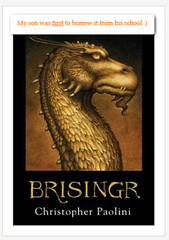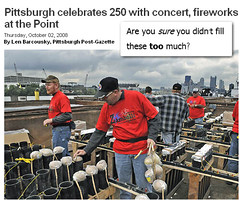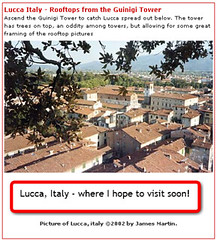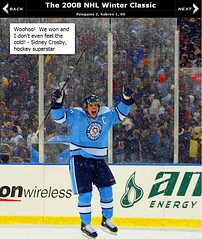Great links
Friday, December 12, 2008
Comments on other student's blogs
http://leblancsatpittsburgh.blogspot.com/2008/10/reading-notes-for-week-7-oct-7.html?showComment=1228974600000#c5585874454781000100
http://monicalovelis2600discussion.blogspot.com/2008/11/week-12-readings.html?showComment=1228974240000#c1975593264101873338
http://joansfolly.blogspot.com/2008/11/week-13-readings.html?showComment=1228977300000#c5013598324973587481
https://www.blogger.com/comment.g?blogID=4815117704244121663&postID=7919017436162120728
https://www.blogger.com/comment.g?blogID=7036399065753048748&postID=4733897159971341260
https://www.blogger.com/comment.g?blogID=1952905712855777154&postID=4935246004943973333
https://www.blogger.com/comment.g?blogID=8117231295550149245&postID=2175226706513409319
https://courseweb.pitt.edu/webapps/portal/frameset.jsp?tab_id=_2_1&url=%2Fwebapps%2Fblackboard%2Fexecute%2Flauncher%3Ftype%3DCourse%26id%3D_9047_1%26url%3D
Wednesday, December 10, 2008
Week 11 Reading Notes & Muddiest Point
This week’s readings were really interesting. I have to admit that I had no prior knowledge of the “Deep Web”. What I found interesting to learn was the difference in number of documents and sites on the Deep Web versus the WWW and that 95% are publicly accessible. In my LIS2000 class, we read much on the interconnected nature of information and people through networks. The dependency on linkages is fascinating. To think that some web pages will not experience hits due to their lack of links to other pages. This identifies the amount of control the conventional search engines have over the pages we visit, since they are handed to us in the form of a “one-click”. I wonder how much more we would find if we did not have that to rely on?
Week 6 Reading Notes & Muddiest Point
I didn’t know there were so many types of networks which serve the different needs of users. We take for granted the networks in our homes and businesses like the simple network between one’s computer and printer. We just expect them to work for us.
I assume that Pitt operates on a Campus-Area Network, since this is most commonly used for educational institutions. I know our SIS building is one of the older campus buildings. Do any of the buildings have fiber runs? As we learned in our LIS 2000 class, networks, both physical and social, have been the bread and butter of many forms of communication. We read about the creation of the OED, where the proofers and the editor communicated via post in different countries. Invariably, humans find a way to get things accomplished together. Again, the Internet has provided the structure through which we can stay connected with one another, despite our physical locations.
Muddiest point:
What is the economic advantage to Google for providing free WAN to Mountain View and the proposal for San Francisco?
Week 5 Reading Notes & Muddiest Point
I enjoyed reading about Dasher and its capabilities for those with disabilities or needing alternative methods of typing code. The auto-select feature for anticipating the next letter is like the feature on most cell phones. Blackberrys have that “auto-fill” feature, like in one’s browser window. Personally, I don’t care for the feature, as often it auto-fills words I did not intend to type.
The blogger challenge of the Reuter’s photos was great. Without the web and digital access to the photos, it would have been harder to prove. The advent of blogs facilitated collaboration toward the goal of discrediting the photographer and his work. Additionally, Reuters’ would not have had the chance to address the problem if its employees did not have internet access. Photoshop and other programs allow many enhancements but they should not be used to falsify events. The article seemed to dislike the control one has over the content of one’s blog. I believe that if you have a blog, you can make it whatever you want and accept or decline certain comments from readers. Ranking of a blog plays a crucial role in its success. As the article pointed out, the links provided on Johnson’s blog in affect lead the way to the discovery of the falsification of the Reuters photos. I don’t have an issue with Johnson’s blog not providing an arena for debate and deliberation. But I agree with the limitations cast upon the openness of discussion and discourse; in a perfect world, everyone would have a voice and a turn in the spotlight.
Muddiest point:
In what instance would one choose to have data altered through lossy compression? Would one not need to have the exact computation or value?
Week 4 Reading Notes & Muddiest Point
This week’s readings were more geared toward libraries and archives. It was interesting to read the author’s point of view regarding libraries being at the forefront of metadata development. That’s a great position in which to be! The idea of museums utilizing the library systems like METS makes sense and opens opportunities to perfect and improve the existing systems. However, there is not a broad magic standard for all collections and materials. This is obvious, but important to note. Metadata applies to different records, collection methods, copyright or downgrade rights, etc. in different industries. The DCMES strives to identify a small group of elements which can be accessed and manipulated by any group to search many WWW information resources. One advantage is the interoperability of the system, but a drawback is that the records are limited in scope.
It was fun learning how to use Flickr and utilize the tag system for our photo collections. It is your own personal photo filing system. Zotero was very user-friendly and has many more capabilities that I would like to explore. I tried to choose tags that would be meaningful when I referred to my collection at a later date. I found that I needed to edit what I initially thought would work. I can see how user-generated metadata could dilute the interrelatedness of records. It was interesting to learn about the fluid nature of data versus metadata; that each can be one another’s data, depending upon the interdependency of systems and their information. The uses of metadata are thought-provoking; from the teacher wanting to “scaffold” student learning in order for them to build on prior knowledge to the digital information systems which provide global access to unique objects. I like the author’s correlation of metadata to the Rosetta Stone.
It was interesting to learn that the Dublin Core Data Model is based upon RDF and that it creates a universal system of properties and language for use in many resource definition groups. As one would surmise, its creation rose from a desire not to depend upon cultural understandings, which leads to confusion. Thus the schemas created were crucial to its success.
Muddiest Point:
How do you know when you need to use a more specific schema? Can it be customized for different audiences/readers?
Week 3 Reading Notes & Muddiest Point
Although I knew Linux existed, I knew nothing about it. How great is it that it can adapt to new and experienced users? Also, the fact the Linux is open source software allows for creativity and improvement. The customization capability is attractive to everyone which provides longevity of the product. It is amazing to me that such a product is available free to users, for the simple exchange of suggestions for improvement.
I was not aware of all the products on the market that run on Linux. The Empeg is really neat; my son would love it. The ProGear WebPad seems to be, in a way, a precursor to the Kindle. I enjoyed reading the article at Kernelthread.com and found other articles that were a good read and worth forwarding to colleagues.
MAC users are fiercely supportive of their systems. I know many MAC users who cringe at the idea of using a PC. The author’s site was very interesting. Some of the things he discussed were difficult to understand, but I got the gist of his rantings. It all comes down to preference and what people are used to. It’s like the kid that becomes a firefighter because his father or uncle or grandfather was one. Environment plays an active role as well. My elementary school had PC’s. My kids’ elementary school has PC’s. The school district where my mom taught in the 80’s bought MACs and they haven’t looked back since. No system is perfect; each has its advantages and drawbacks, so each will draw its own crowd of support. I know that many people do not like Vista and it has been wrought with my problems. When a user is accustomed to using a particular product, it’s difficult to be excited to switch it entirely. At least the launch of Vista includes encouragement for those of us still using XP.
Muddiest point:
I’m not certain I understand what *nix is?
Week 2 Reading Notes & Muddiest Point
I am happy to say that I knew the majority of the terms discussed in the Wikipedia Computer Hardware reading. My husband is in charge of storage at his job and uses tape drives for backup. He works for a very conservative company, but hopes one day soon it will take advantage of off-site storage. Recently, I read about a new product for storage at home. Unless one is reading about it constantly, it is easy to fall behind the new products available to the public.
I enjoyed the virtual tour of the Computer History Museum. It would be interesting to learn how many donations they receive per year and the quality of those items. The “Day in History” exhibit was a nice snapshot for those who may not be computer-savvy but are interested in the evolution of products and inventions.
I found it intriguing to read the description of Moore’s Law on Wikipedia and then watch the podcast about it. It is amazing that his predictions and formula for computer products that become obsolete still apply today. I can just imagine the time that it took him to develop the model and test it.
Muddiest point:
When Moore intended only to use his forecasting model for semiconductor circuits, why have others used it for other forms of technology? Have they used it with success or skewed results?
Monday, November 17, 2008
Muddiest Pt for Unit 10 - Diana hannah
Is it a requirement of functionality?
Tuesday, November 11, 2008
Assignment #6: My Website
Once I figured out how to reference my images, it worked fairly well. The website creator program I used came with templates that I was unable to delete or modify to transfer from my computer to the server. Still, I completed the requirements and my images look great :)
Sunday, November 9, 2008
Sunday, October 19, 2008
LIS2600 Assignment 5 Koha
I really liked this assignment :) It was great using the Library of Congress catalog.
Saturday, October 11, 2008
Reading Notes for Unit 7
In the article, Dismantling Integrated Library Systems, Andrew Page does not seem to support one solution over another. From all the arguments presented, the one option that stands out from the rest is "redefining the ILS as an applications platform". Libraries have so many more options today so they cannot be complacent. They need to spend more to obtain the long-term value of the product purchased. What I also found interesting was the innovation used by librarians themselves, such as Mark Ludwig. I don't believe there is a one-size-fits-all magic potion for all libraries. Each individual institution or network of libraries must determine the best solution for their systems. Funding varies so that clearly influences their decision as well. If librarians are not swooned by the glam of trade shows and product demos and seek advice from one another, solutions will present themselves. Isn't that what librarians represent? A way to share information, so why not amongst themselves as well?
The Google video was interesting as well. I knew Page and Brin had a good working environment for their employees, but I enjoyed hearing about the 20% clause. I found an interesting article about their advertising, which was at the heart of their presentation. Specifically, that their searches are free due to advertising dollars. The article I referenced tell us about a deal in the works between Yahoo! and Google. Very interestingly, both parties feel it will not create a monopoly on ad searches. Naturally, Microsoft is not happy about it!
http://legalpad.blogs.fortune.cnn.com/2008/10/10/google-and-yahoo-fight-with-the-feds/
Tuesday, October 7, 2008
Assignment 4: Working with Jing
Annotated Images from Flickr:
1. http://www.flickr.com/photos/30711421@N06/2922030169/
2. http://www.flickr.com/photos/30711421@N06/2922123935/
3. http://www.flickr.com/photos/30711421@N06/2923025004/
4. http://www.flickr.com/photos/30711421@N06/2922184871/
5. http://www.flickr.com/photos/30711421@N06/2922220901/
Screencast/Jing video
http://www.screencast.com/users/dmhannah/folders/Jing/media/0d4823e3-0aa0-4ffa-94da-12025e083b60
Screen capture, Astronomy Picture of the Day
Monday, October 6, 2008
Muddiest Point & Reading Points on Unit 6: Computer Networks, Wireless Networks (9/30)
Is RFID really useful in libraries? Yes, if the purchase of the technology can be funded and shared or discounted across a library network. RFID can be an EZPass for books. Don’t we all enjoy zooming through the EZPass lane? The reduction in staff time alone would be an argument for integrating the system in libraries. As one article mentioned, this technology would be around for a long time, thus placing high value on such an investment.
Is privacy concerns about RFID in library a real concern? From all that we read this week, it is not a concern for libraries. The tags do not contain any patron information, just a barcode and check out/in status and can encrypted. It would be like anything else; if you disclose the uses of RFID in the library and educate the patrons, there is no need for concern. Remember when shampoo bottles did not proclaim, “this product was not tested on animals”? It can be the same with RFID. There can be an association or disclaimer of sorts for authenticating the system and the policies to which the library will be adhere.
How to make RFID a better technology for libraries? As stated in the BiblioTech online magazine article by Dorothy Hemmo, as long as policies and standards are developed within the library network using RFID and the patrons are educated on the uses, libraries can move toward implementing the system. Encryption is key so that third party access can be blocked. Like software updates, the libraries will need to keep abreast of new technology with regards to encryption.
http://lsobibliotech.blogspot.com/2005/11/library-rfid-and-patron-privacy.html
Saturday, October 4, 2008
Monday, September 22, 2008
Saturday, September 20, 2008
Screen display photo set
Display photos
http://api.flickr.com/services/feeds/photoset.gne?set=72157607399550588&nsid=307...
Thumbnails from Flickr
Thumbnail version
http://api.flickr.com/services/feeds/photoset.gne?set=72157607399579864&nsid=307...
Monday, September 1, 2008
Jason Vaughn's Lied Library theme article analysis
Mr. Vaughan does not omit any detail, from the per-page printing charge remaining static to the issue of air-conditioning in the server room. His descriptions were often clever, i.e., referring to the library’s software images as being everything but “plain vanilla” or simple. The writing was fluid, albeit descriptively heavy at times, and the timeline was documented with knowledge and pride.
Mr. Vaughan addressed an important point towards the end of the article. He speaks of the challenges faced in order to keep up with the maintenance of aging equipment and systems. The challenge of finding ways to fund long-term plans for upgrading software, hardware, etc., is not unique to libraries. It would have been a good argument to place in the article at that juncture.
As Mr. Vaughan’s article was clear and easy to absorb, I look forward to reading more about UNLV’s Lied Library and its plans to collaborate digitally with other institutions and integrate a content management system.
Clifford Lynch position paper analysis
I believe Mr. Lynch’s paper centers around the argument of specialization versus generalization when referring to information technology literacy. While educating the masses on the intricacies of an internet 2 access grid, DLA, or rack-mount environment would be advantageous, it is my opinion that most of us can be categorized as specialists or generalists. Specifically, training to that degree is best offered to the specialists; those with daily application of that information.
When Mr. Lynch refers to including “fluency with current tools”, most students would not have the interest to support separate dedicated information literacy training. Although intriguing, the practical application of such a program does not seem feasible.
Mr. Lynch achieves his goal of presenting his arguments for incorporating new components into curriculum for the general student population. He supports his argument citing inadequacies in IT curricula as it pertains to broad spectrum subjects. However, he also counters with an admission of the time needed to impart the complexities of IT and information literacy. His argument concludes with a question of the importance of a “bank” of skills which would aid those in all facets of our society, i.e., commerce or science or other.
With regard to information technology, Mr. Lynch goes so far as to touch on the issue of creating maps of information, such as the context models hypothesized in the previous article. But he also refers to the limitations of digital resources, stating that “much material will not be available in digital form for the foreseeable future” (1998, Lynch, Clifford: Information Literacy and Information Technology Literacy: New Components in the Curriculum for a Digital Culture). This statement is incongruous to his prior arguments. His closing statements indicate a desire to explore more, as he lists the issues related to information literacy. I look forward to reading more of his work.
Analysis of "Content, Not Containers" report
In the follow-up report, “2004 Information Format Trends: Content, Not Containers”, the OCLC Marketing Staff achieves its goals of updating its predictions of format trends. It continues to build upon predictions made in the 2003 report, Five-Year Information Format Trends. The staff dedicates much of the report to “format agnostic” nature of consumers seeking contextual and non-contextual information.
With regard to increased content communication, the staff refers to the “disruptive technology in the content world” (2004 Information Format Trends: Content, Not Containers, OCLC Marketing Staff).
According to the bar graph on page 4, email and text message traffic increases exponentially, but the decline in
When referring to wikis and blogs, the staff’s opinion seems to shift to excitement for the possibilities available to librarians. The authors touch briefly on the social nature of information sharing today. The real-world quotes selected to support this argument were appropriate.
However, the writers then delve deeper into micropublishing and microcontent and away from their main argument of contextual guides. Specifically, the CEO of Blogads is quoted as saying, “…users want granular pieces of information and data, at the moment of need, in the right format…’Everything, everywhere, when I want it, the way I want it.” This does not seem to support the main force of the report, which stated that content consumers were “format agnostic”.






